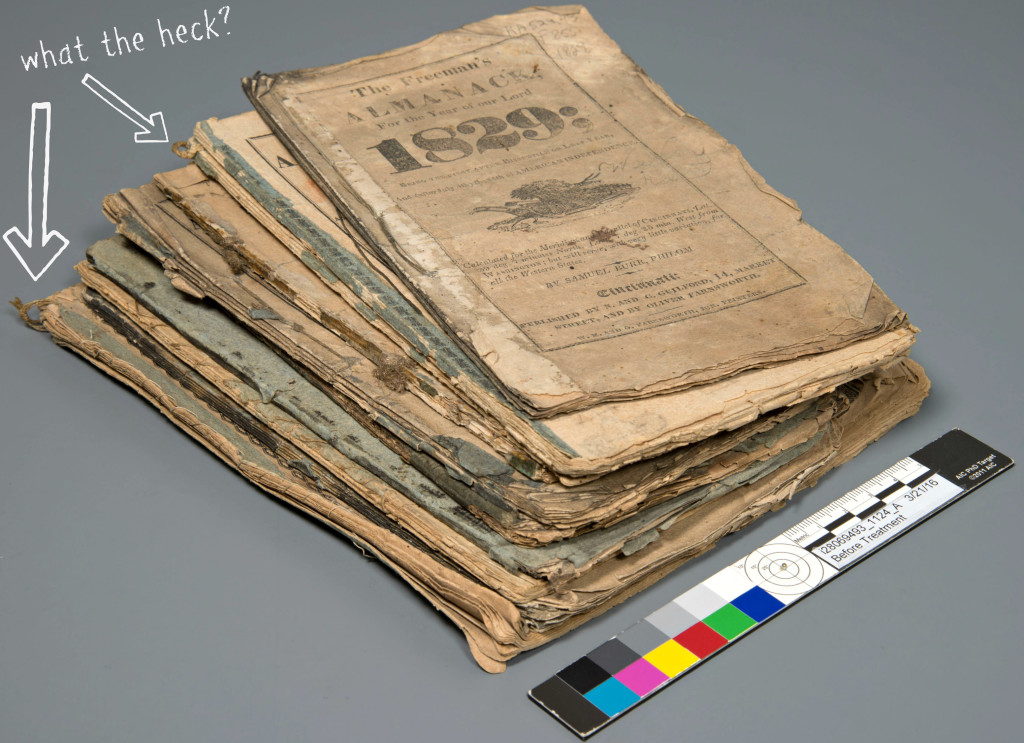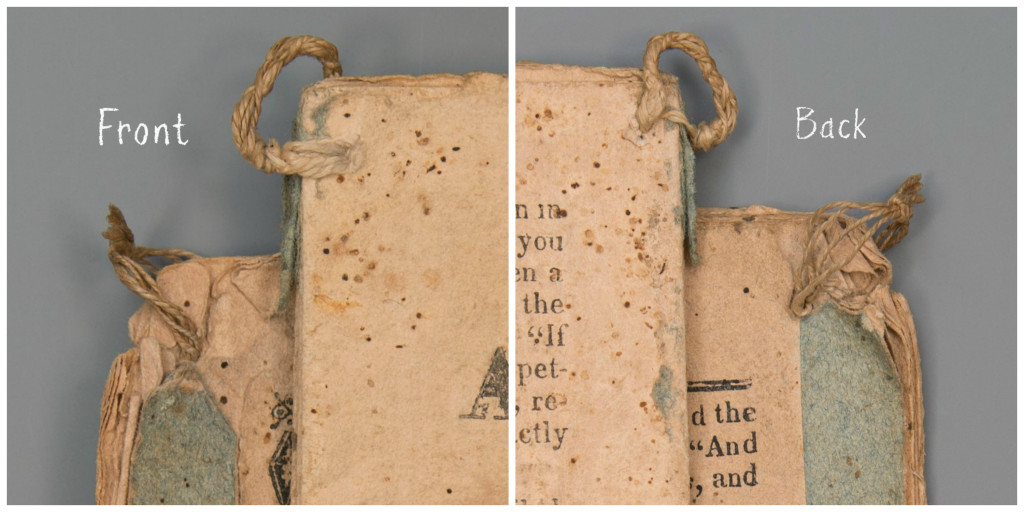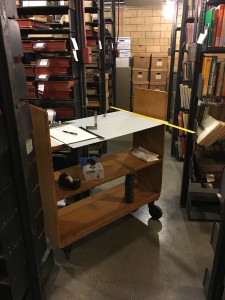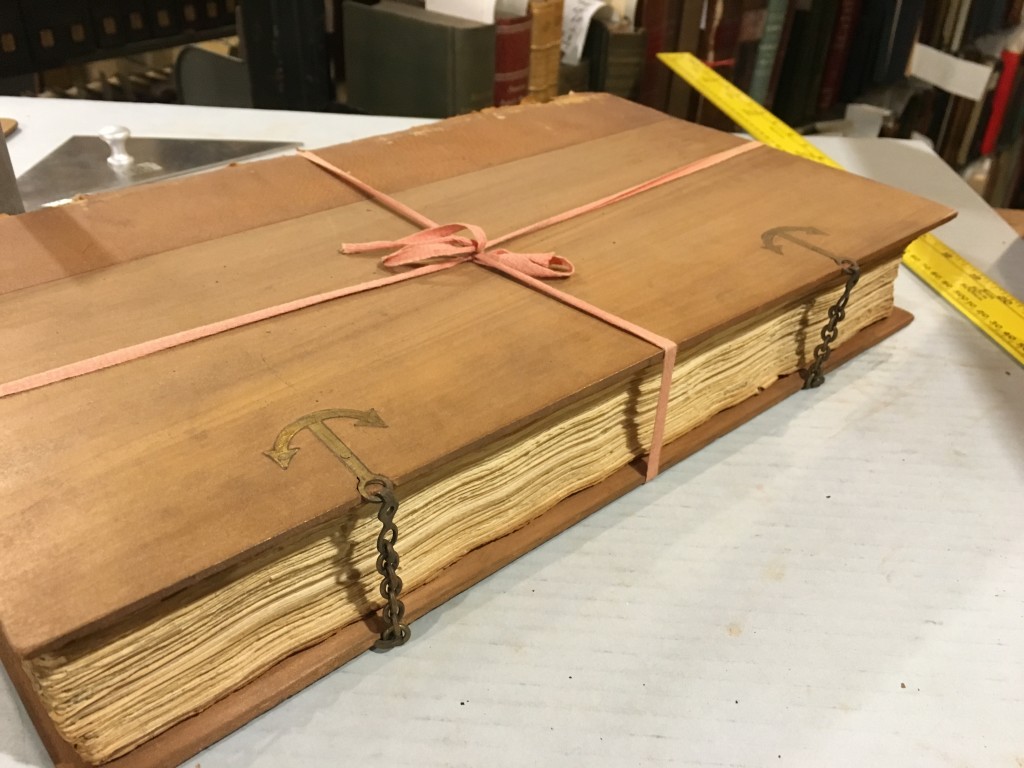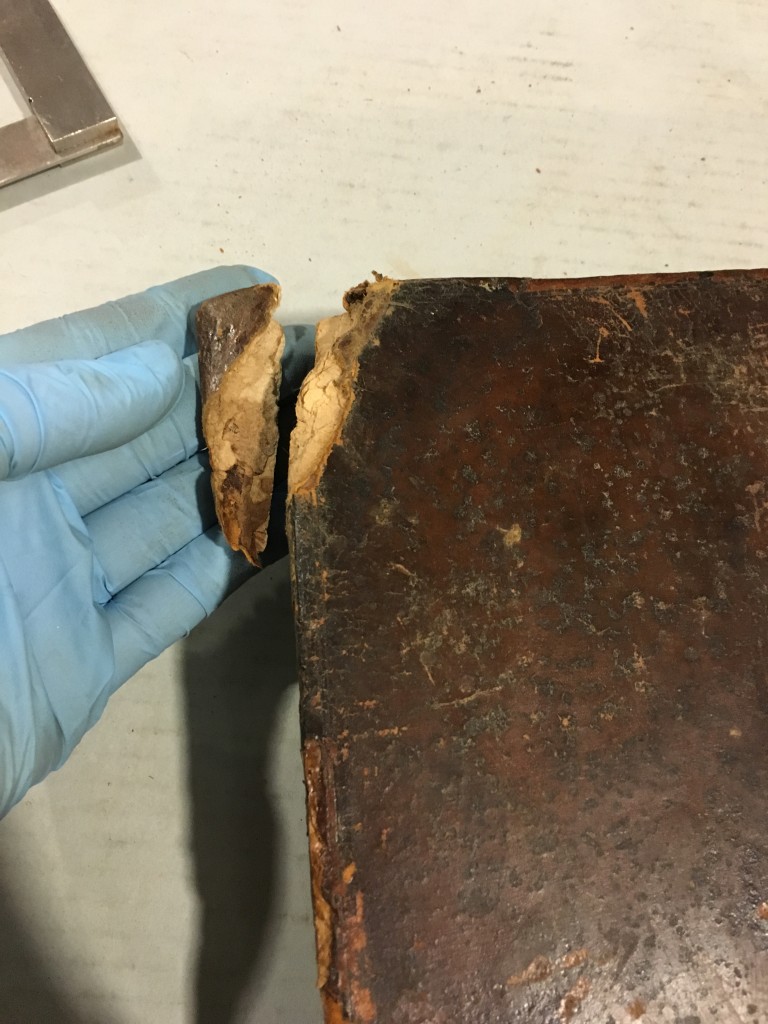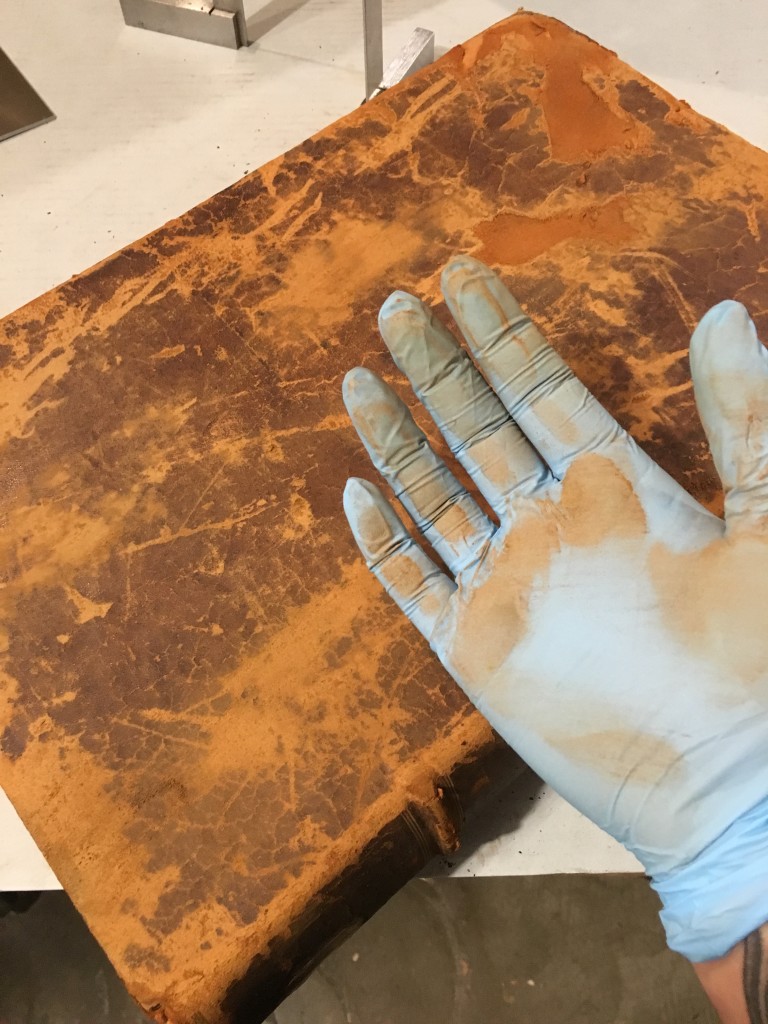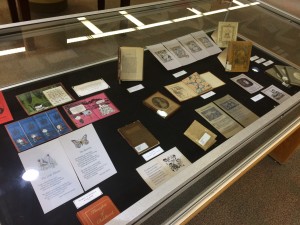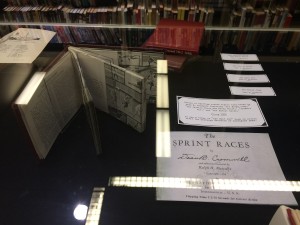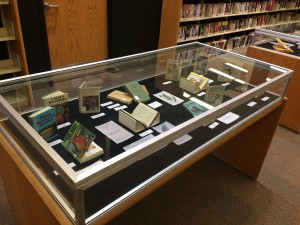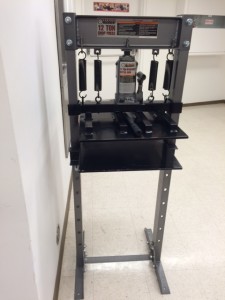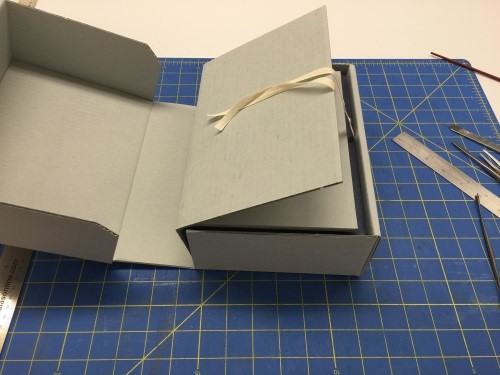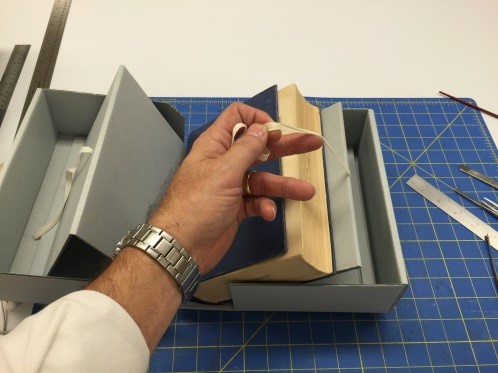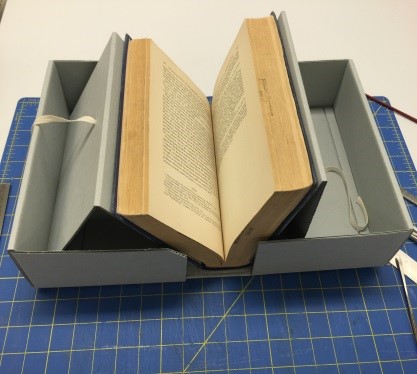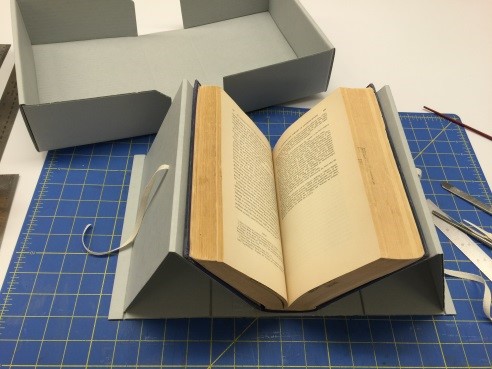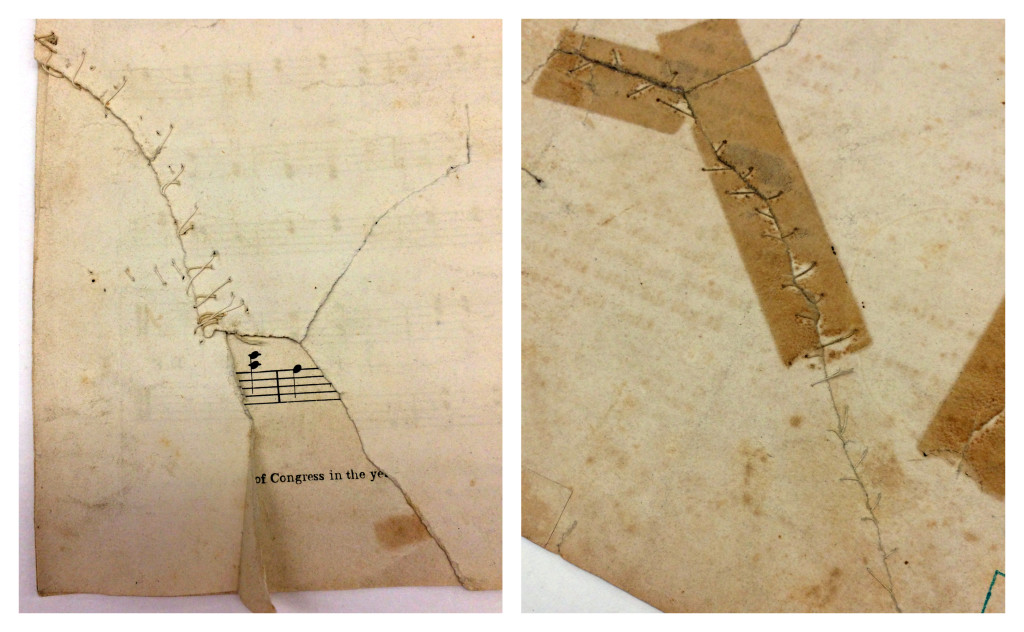A Simple Solution for Lantern Slides
This October the Preservation Lab arranged for staff training in photograph conservation with an expert in this specialty to help us address specific needs for the two institutions. The lab hosted a 3-day workshop taught by Photograph Conservator, Tom Edmondson. Lab staff and two other local paper and book conservators attended. We were taught how to identify more than 16 types of historic photographic processes. We learned how to safely preserve and store a variety of formats, including daguerreotypes and lantern slides. Using actual historical photographs as learning opportunities we were taught basic and advanced treatment techniques such as surface cleaning photographs, washing, removing linings, flattening creases, and matting. The technicians have already begun to implement the knowledge gleaned from the workshop in the treatment of some Public Library lantern slides.
For example, with the lantern slide below the losses on the glass were filled with Vivak in order to prevent further damage. Vivak, a clear thermoplastic sheet, was chosen since it is archival, looks similar to glass and is an easy material to cut and shape without losing its structural integrity.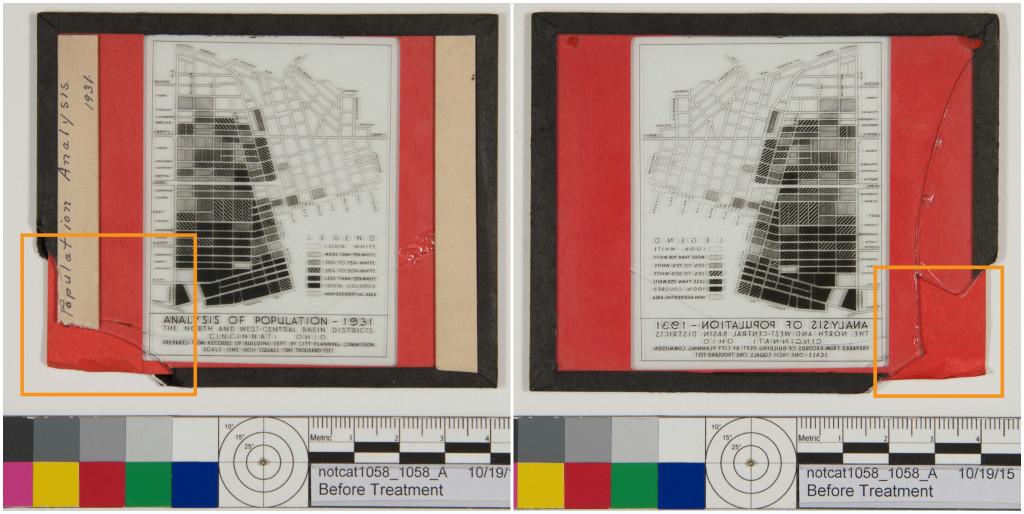
The Vivak was precisely cut and placed onto the missing areas.
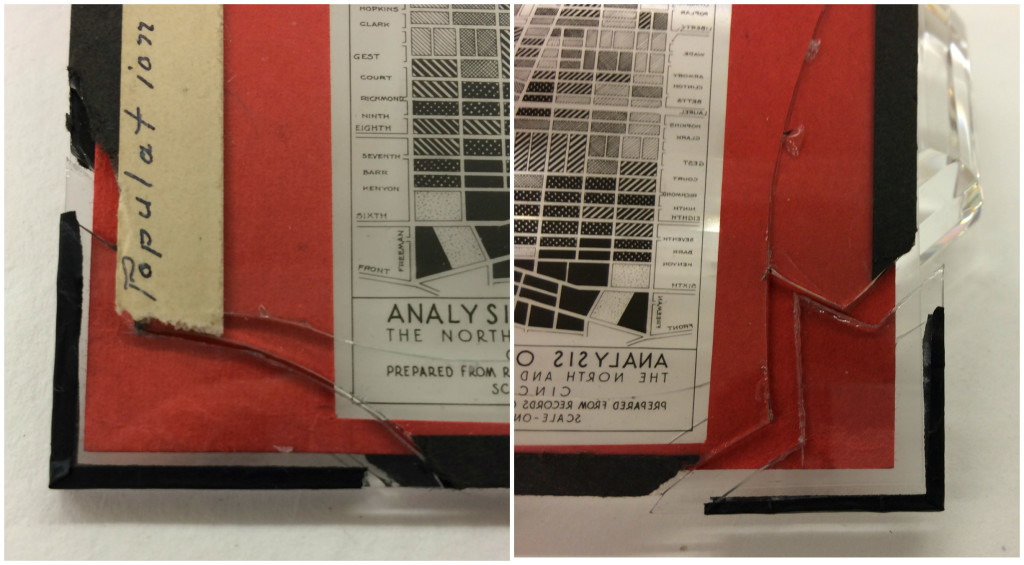
To attach the recto and verso of the Vivak fill pieces to each other, a strip of Filmoplast R was used around the edges. Filmoplast R, a cellulose tissue coated with an acid and solvent free heat-activated adhesive, was toned with Golden fluid acrylics to match the original paper strip around the edges of the lantern slide.
To protect the edges of the lantern slide, and to secure the filled areas in place, a strip of Mylar (polyester film) was placed along the edges and secured with a small piece of Filmoplast R.
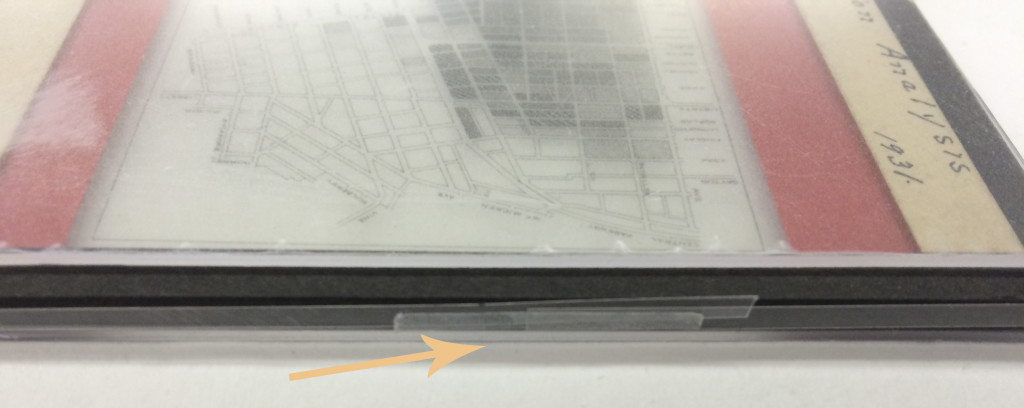
Finally, the lantern slide was sandwiched between two pieces of Vivak and secured with a strip of toned Filmoplast R by wrapping it around the edges.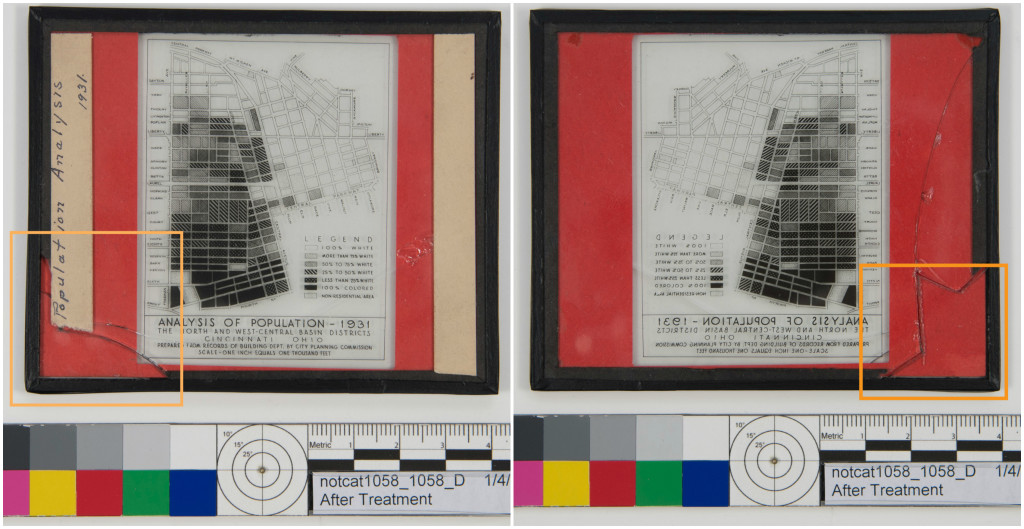
With another lantern slide, the original plastic coated paper strip around the glass plates was lifting and detaching from the glass.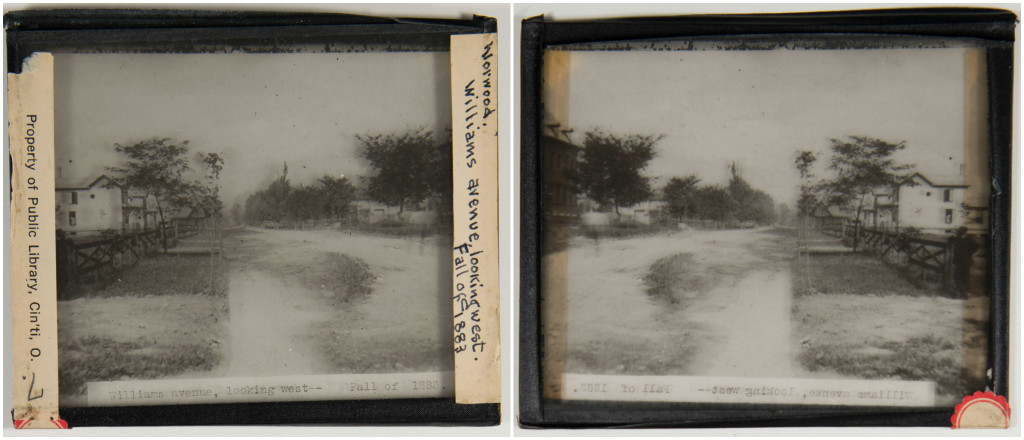
The detached black strip was mended and adhered in place with the heat activated adhesive BEVA film 371, and a tacking iron.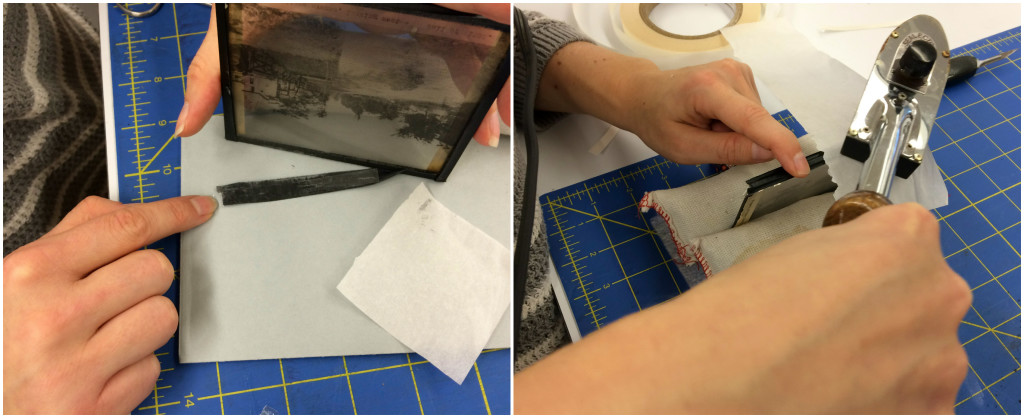
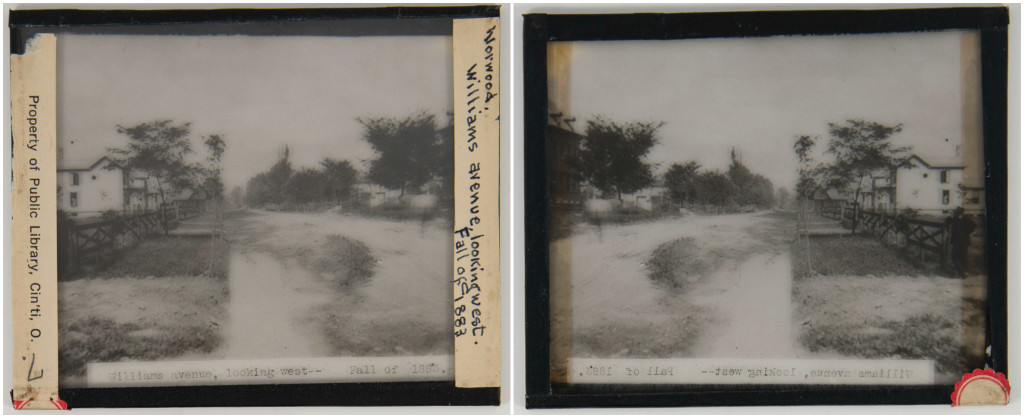
This project was a great opportunity to learn and work with different materials.
Ashleigh Schieszer (PLCH) — Book and Paper Conservator, Author
Catarina Figueirinhas (UCL) — Sr. Conservation Technician, Author & Photographer
Jessica Ebert (UCL) — Conservation Technician, Photographer

